Digital Citizen Participation within Schools in the United Kingdom and Indonesia: An Actor–Network Theory (ANT) Perspective
Abstract
:1. Introduction
2. Methods
2.1. Step-by-Step Research Method
2.2. Literature Review of ANT
3. Results
3.1. A Grammar School in Hampshire, United Kingdom
- (a)
- Type. This can be divided into informative, directive, responsive, consultative, and supportive activities. Communication, interaction, and participation through media (technology and non-technology) can be informative for disseminating information, particularly from the school to other stakeholders. For example, the grammar school publishes school magazines and newsletter to inform parents about school activities, changes of schedule, and other information. The school also has various media such as a virtual learning environment for giving direction to parents and pupils about what they have to do to support education processes. Furthermore, the grammar school uses Facebook, Twitter, e-mail, telephone, a virtual learning environment, and other activities such as face-to-face meetings to maintain responsive, consultative, and supportive activities between the school and stakeholders.
- (b)
- Level. According to Macintosh [3], there are three levels of participation: enabling, engaging, and empowering. Firstly, the enabling process is supporting those who would not typically access the Internet and take advantage of the large amount of information available. The grammar school has an enabling process by using paper-based media, such as face-to-face meetings and letters. Secondly, the engaging process indicates the process to reach out a wider audience for feedback on the policy-making processes. This process refers to top-down consultation. In this process, the school used a virtual learning environment, newsletter, and school magazines as media for top-down consultation from school to parents. Various technologies, such as e-mail, websites, Facebook, Twitter, and a parents’ forum were used to support the engaging process, and parents can actively participate in the school policy-making process through those media. Thirdly, the empowering process is concerned with supporting active participation and refers to a bottom-up process to influence the policy-making stage. This step can be taken through various media and technology such as a parents’ forum, e-mail, Facebook, Twitter, a virtual learning system, the newsletter, and school magazines.
- (c)
- Activities. There are various activities regarding communication, interaction, and participation, such as open evenings, an open morning when they advertise the school, informal team coffee sessions for parents, a parent–teacher association, association fundraising, and social events; parents can also participate by speaking to teachers and the headmaster in an informal setting.
3.2. A Private School in Surabaya, Indonesia
- (a)
- Type. This can be divided into informative, directive, responsive, consultative, and supportive activities. Communication, interaction, and participation through media (technology and non-technology) can be used to disseminate information, particularly from the school to other stakeholders. For example, the private school publishes a school magazine to inform parents about school activities. The school also has various media for giving directions to parents and pupils on how to support the education process, such as Hikmah Harmony, letters, and face-to-face meetings. Furthermore, the private school uses e-mail, the telephone, e-learning, and face-to-face meeting to support responsive, consultative, and supportive activities between the school and stakeholders.
- (b)
- Level. According to Macintosh [3], the private school enables participation through face-to-face meetings, home calls, and letters. The school also uses the Hikmah Harmony weblog, landline and internal telephones, and mobile-based communication (mobile calls and text messages) in the engaging process. Furthermore, WhatsApp is used to encourage participation between stakeholders, especially teachers, staff, and school leaders.
- (c)
- Activities. There are various activities related to communication, interaction, and participation, such as alumni talk; supervising student organisations; alumni meetings; administration services for staff, finances, students, and curriculum; counselling for students; alumni attending student organisation activities; foundation staff serving as a communicator link between school and foundation; and parents participating by speaking to teachers and the headmaster.
3.3. Similarities
3.4. Differences
3.5. Developed Model
4. Discussion
5. Conclusions
- (1)
- Technology and related media change and influence participation between stakeholders.
- (2)
- There are similar sets of complex factors covering the different school systems in the two countries.
- (3)
- Each context has its own unique and complex factors.
- (4)
- School systems operate in a social context and dynamic environment, so relevant citizen participation needs to be considered within this social and dynamic context. Citizen participation is a multidimensional process with many factors.
- (5)
- ANT is a relevant tool for investigating citizen participation in an increasingly technology-dominated world. It is particularly powerful in capturing the influence of technology and related media in the participation process.
- (6)
- Research into non-key concepts of ANT may provide other new and interesting insights into ANT.
- (7)
- Implementation of technology in a particular context/environment should include non-technological factors.
- (8)
- Multiple comparative case studies are useful for bringing out the differences and similarities between case studies.
Acknowledgments
Author Contributions
Conflicts of Interests
Abbreviations
| ANT | Actor-network theory (ANT) |
| UK | United Kingdom |
| ICT | Information and communication technology |
| UNESCO | The United Nations Educational, Scientific, and Cultural Organization |
| MDGs | Millennium Development Goals |
| IT | Information technology |
| SMT | Senior management team |
| IAPS | The independent associations of prep schools (IAPS) |
| HMC | The headmasters and headmistress conference (HMC) |
| UNESA | Universitas Negeri Surabaya |
| LCD | Liquid crystal display |
| PASIAD | Pacific Countries Social and Economic Solidarity Association |
| KPI | Konsorsium Pendidikan Islam |
References
- Oakley, P. People’s Participation in Development Projects: A Critical Review of Current Theory and Practice; INTRAC: Oxford, UK, 1995. [Google Scholar]
- Alesina, A.; La Ferrara, E. Participation in heterogeneous community. Q. J. Econ. 2000, 115, 847–904. [Google Scholar] [CrossRef]
- Macintosh, A. Characterizing e-participation in policy-making. In Proceedings of the 37th Annual Hawaii International Conference on System Sciences, Big Island, HI, USA, 5–8 January 2004.
- Tambouris, E.; Liotas, N.; Kaliviotis, D.; Tarabanis, K. A framework for scoping eParticipation. In Proceedings of the 8th Annual International Digital Government Research Conference, Philadelphia, PA, USA, 20–23 May 2007.
- Kalampokis, E.; Tambouris, E.; Tarabanis, K. A Domain Model for eParticipation. In Proceedings of the Third International Conference on Internet and Web Applications and Services, Athens, Greece, 8–13 June 2008.
- Islam, M.S. Towards a sustainable e-Participation implementation model. Eur. J. ePract. 2008, 5, 1–12. [Google Scholar]
- Phang, C.W.; Kankanhalli, A. A framework of ICT exploitation for e-participation initiatives. Commun. ACM 2008, 51, 128–132. [Google Scholar] [CrossRef]
- Scherer, S.; Wimmer, M.A.; Ventzke, S. Hands-On Guideline for E-Participation Initiatives. In E-Government, E-Services and Global Processes; Springer: Berlin/Heidelberg, Germany, 2010; pp. 49–61. [Google Scholar]
- Scherer, S.; Wimmer, M.A. Reference Framework for E-participation Projects. In Electronic Participation; Springer: Berlin/Heidelberg, Germany, 2011; Volume 6847, pp. 145–156. [Google Scholar]
- Bin Salamat, M.A.; Bin Hassan, S. An Actor-Network Theory (ANT) approach to Malaysian e-participation. In Proceedings of the International Conference on Social Science and Humanity, Singapore, 26–28 February 2011.
- Public Administration and Development Management Department of Economic and Social Affairs. Available online: https://publicadministration.un.org/en/eparticipation (accessed on 16 October 2016).
- Saebo, O.; Rose, J.; Flak, L.S. The shape of eParticipation: Characterizing an emerging research area. Gov. Inf. Q. 2008, 25, 400–428. [Google Scholar] [CrossRef]
- McGrath, K.; Elbanna, A.; Hercheui, M.; Panagiotopoulos, P.; Saad, E. Exploring the democratic potential of online social networking: The scope and limitations of e-participation. Commun. Assoc. Inf. Syst. 2012, 30, 239–254. [Google Scholar]
- Medaglia, R. e-Participation research: Moving characterization forward (2006–2011). Gov. Inf. Q. 2012, 29, 346–360. [Google Scholar] [CrossRef]
- Nam, T. Government-Driven Participation and Collective. J. Inf. 2016, 7, 1–14. [Google Scholar]
- Yusuf, M.; Adams, C.; Dingley, K. A Novel framework of e-participation. In Proceedings of the 14th European Conference on e-Government (ECEG), Brasov, Romania, 12–13 June 2014.
- Robeyns, I. Three models of education. Theory Res. Educ. 2006, 4, 69–84. [Google Scholar] [CrossRef]
- Corner, J.P.; Haynes, N.M. Parent involvement in schools: An ecological approach. Elem. Sch. J. 1991, 91, 271–277. [Google Scholar]
- Morgan, N. The Education Secretary Addresses the National Governors’ Association (NGA) Summer Conference. Available online: https://www.gov.uk/government/speeches/nicky-morgan-speaks-about-the-importance-of-school-governance (accessed on 5 August 2015).
- Jokowi, J.K. Jalan Perubahan Untuk Indonesia Yang Berdaulat, Mandiri Dan Berkepribadian. Available online: http://kpu.go.id/koleksigambar/VISI_MISI_Jokowi-JK.pdf (accessed on 17 July 2015). (In Indonesia)
- Conley, S. Review of Research on Teacher Participation in School Decision Making. Rev. Res. Educ. 1991, 17, 225–266. [Google Scholar] [CrossRef]
- Baswedan, A. Sambutan Mendikbud untuk Hardiknas 2015. 2 May 2015. Available online: http://www.kemdiknas.go.id/kemdikbud/berita/4151 (accessed on 27 August 2015). (In Indonesian)
- Callon, M. Some elements of a sociology of translation: Domestication of the scallops and the fishermen of St Brieuc Bay. Sociol. Rev. 1984, 32, 196–233. [Google Scholar] [CrossRef]
- Latour, B. Science in Action How to Follow Scientists and Engineers through Society; Harvard University Press: Cambridge, MA, USA, 1987. [Google Scholar]
- Law, J. Introduction: Monsters, machines and socio-technical relations. In A Sociology of Monsters: Essays on Power, Technology and Domination; Law, J., Ed.; Routledge: London, UK, 1991. [Google Scholar]
- Walsham, G. Doing interpretive research. Eur. J. Inf. Syst. 2006, 15, 320–330. [Google Scholar] [CrossRef]
- Halfpenny, P. The analysis of qualitative data. Sociol. Rev. 1979, 27, 799–827. [Google Scholar] [CrossRef]
- Silverman, D. Doing Qualitative Research: A Practical Guide; Sage Publications: Thousand Oaks, CA, USA, 2000. [Google Scholar]
- Orlikowski, W.J.; Baroudi, J.J. Studying Information Technology in Organizations: Research Approaches and Assumptions; Working Paper Series STERNIS-90-4; New York University: New York, NY, USA, 1991; pp. 1–28. [Google Scholar]
- Darke, P.; Shanks, G.; Broadbent, M. Successfully completing case study research: Combining rigour, relevance and pragmatism. Inf. Syst. J. 1998, 8, 273–289. [Google Scholar] [CrossRef]
- Yusuf, M.; Adams, C.; Dingley, K. Research Philosophy and methodologies of e-government: Update from ECEG and ICEG. In Proceedings of the 14th European Conference on E-Government (ECEG), Brasov, Romania, 12–13 June 2014.
- Bannister, F.; Connoly, R. Researching eGovernment: A Review of ECEG in it Tenth year. In Proceedings of the 10th European Conference on E-Government (ECEG), Limerick, Ireland, 17–18 June 2010.
- Bolivar, M.P.R.; Munoz, L.A.; Hernandez, A.M.L. Trends of e-Government Research. Contextualization and Research Opportunities. Int. J. Digit. Account. Res. 2010, 10, 87–111. [Google Scholar]
- Basit, T. Manual or electronic? The role of coding in qualitative data analysis. Educ. Res. 2003, 45, 143–154. [Google Scholar]
- Welsh, E. Dealing with Data: Using NVIVO in the Qualitative Data Analysis Process. Forum Qual. Soc. Res. 2002, 3, 20. [Google Scholar]
- Callon, M. The Sociology of an Actor-Network: The Case of the Electric Vehicle. In Mapping the Dynamics of Science and Technology; Palgrave Macmillan: Basingstoke, UK, 1986; pp. 19–34. [Google Scholar]
- Callon, M.; Law, J. On the construction of sociotechnical networks: Content and context revisited. Knowl. Soc. 1989, 9, 57–83. [Google Scholar]
- Hanseth, O.; Aanestad, M.; Berg, M. Actor-network theory and information systems. What’s so special? Inf. Technol. People 2004, 17, 116–123. [Google Scholar] [CrossRef]
- Latour, B. On using ANT for studying information systems: A (somewhat) Socratic dialogue. In The Social Study of Information and Communication Technology Innovation, Actors and Contexts; Oxford University Press: Oxford, UK, 2004. [Google Scholar]
- Walsham, G.; Sahay, S. GIS for District-Level Administration in India: Problems and Opportunities. MIS Q. 1999, 23, 39–65. [Google Scholar] [CrossRef]
- Walsham, G. Actor-Network Theory and IS Research: Current Status and Future Prospects. In Information Systems and Qualitative Research; Springer: New York, NY, USA, 1997; pp. 466–480. [Google Scholar]
- Law, J. After ANT: Complexity, naming and topology. Sociol. Rev. 1999, 47, 1–14. [Google Scholar]
- Whittle, A.; Spicer, A. Is Actor Network Theory Critique? Organ. Stud. 2008, 29, 611–629. [Google Scholar] [CrossRef]
- Heeks, R.; Stanforth, C. Understanding e-Government project trajectories from an actor-network perspective. Eur. J. Inf. Syst. 2007, 16, 165–177. [Google Scholar] [CrossRef]
- Faik, I.; Walsham, G. Modernisation through ICTs: Towards a network ontology of technological change. Inf. Syst. J. 2013, 23, 351–370. [Google Scholar] [CrossRef]
- Sayes, E. Actor-network theory and methodology: Just what does it mean to say that nonhumans have agency? Soc. Stud. Sci. 2014, 44, 134–149. [Google Scholar] [CrossRef]
- Bloomfield, B.P.; Cooper, D.J.; Rea, D. Machines and manoeuvres: Responsibility accounting and the construction of hospital information systems. Account. Manag. Inf. Technol. 1992, 2, 197–219. [Google Scholar] [CrossRef]
- Bloomfield, B.P.; Vurdubakis, T. Boundary disputes negotiating the boundary between the technical and the social in the development of IT systems. Inf. Technol. People 1994, 7, 9–24. [Google Scholar] [CrossRef]
- Holmstrom, J.; Stalder, F. Drifting technologies and multi-purpose networks: The case of the Swedish card. Inf. Organ. 2001, 11, 187–206. [Google Scholar] [CrossRef]
- Madon, S.; Sahay, S.; Sahay, J. Implementing property tax reforms in Bangalore: An actor network perspective. Inf. Organ. 2004, 14, 269–295. [Google Scholar] [CrossRef]
- Cho, S.; Mathiassen, L.; Nilsson, A. Contextual dynamics during health information systems implementation: An event-based actor network approach. Eur. J. Inf. Syst. 2008, 17, 614–630. [Google Scholar] [CrossRef]
- Perillo, S. Constructing participation practice: An ANT account. Qual. Res. Organ. Manag. Int. J. 2008, 3, 215–230. [Google Scholar] [CrossRef]
- Kumar, N.; Rangaswamy, N. The mobile media actor-network in Urban India. In Proceedings of the CHI’13 Conference on Human Factors in Computing Systems, Paris, France, 27 April–2 May 2013.
- MacKenzie, D.; Wajcman, J. Introductory Essay: The Social Shaping of Technology; London School of Economics (LSE): London, UK, 1999. [Google Scholar]
- Williams, R.; Edge, D. The Social Shaping of technology. Res. Policy 1996, 25, 865–899. [Google Scholar] [CrossRef]
- Scott, W.R. The Adolescence of Institutional Theory. Adm. Sci. Q. 1987, 32, 493–511. [Google Scholar] [CrossRef]
- Selznick, P. Leadership in Administration; Harper and Row: New York, NY, USA, 1957. [Google Scholar]
- Walsham, G.; Han, C.K. Structuration Theory and Information Systems Research. In Proceedings of the 11th International Conference on Information Systems (ICIS), Copenhagen, Denmark, 16–19 December 1990.
- Chisalita, C. Understanding technology use in the public sector: A Structuration Theory perspective with a focus on emerging meanings. Interv. Res. 2006, 2, 91–111. [Google Scholar]
- Kort, W.; Gharbi, J.E. Structuration theory amid negative and positive criticism. Int. J. Bus. Soc. Res. 2013, 3, 92–104. [Google Scholar]
- Freeman, R.E. Stakeholder Theory. Available online: http://stakeholdertheory.org/ (accessed on 26 October 2016).
- Allan, G. A critique of using grounded theory as a research method. Electron. J. Bus. Res. Methods 2003, 2, 1–77. [Google Scholar]
- Stanforth, C. Using Actor-Network Theory to Analyze E-Government Implementation in Developing Countries. Inf. Technol. Int. Dev. 2006, 3, 35–60. [Google Scholar] [CrossRef]
- Law, J.; Callon, M. The Life and Death of an Aircraft: A Network Analysis of Technical Change. In Shaping Technology/Building Society: Studies in Sociotechnical Change; The MIT Press: Cambridge, MA, USA; London, UK, 1992; pp. 21–52. [Google Scholar]

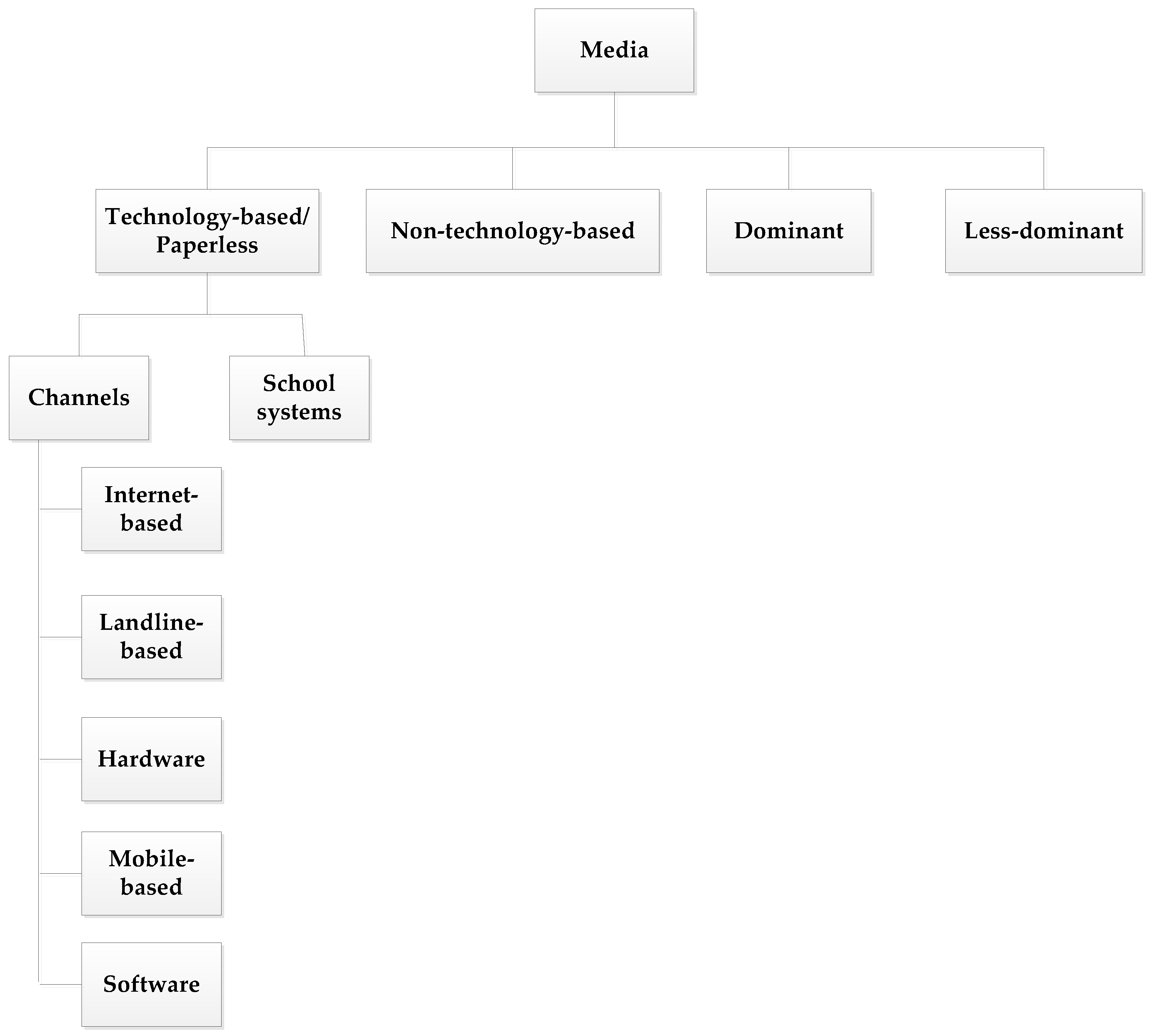



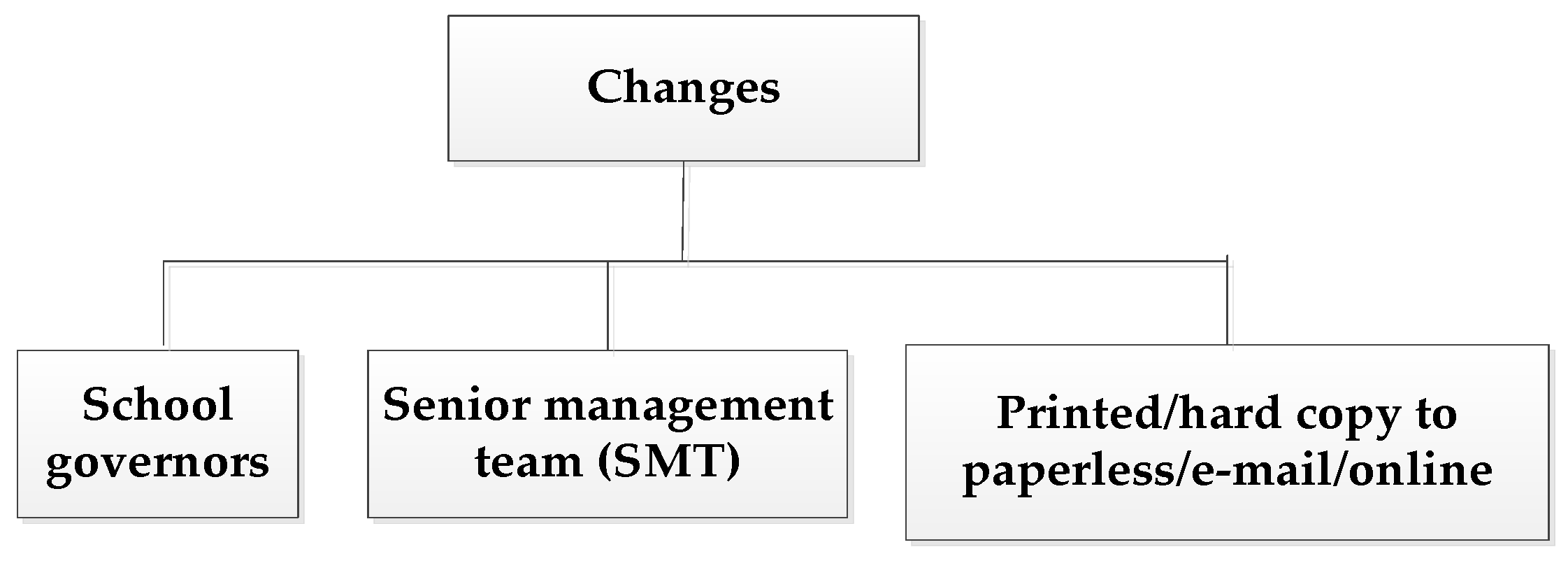
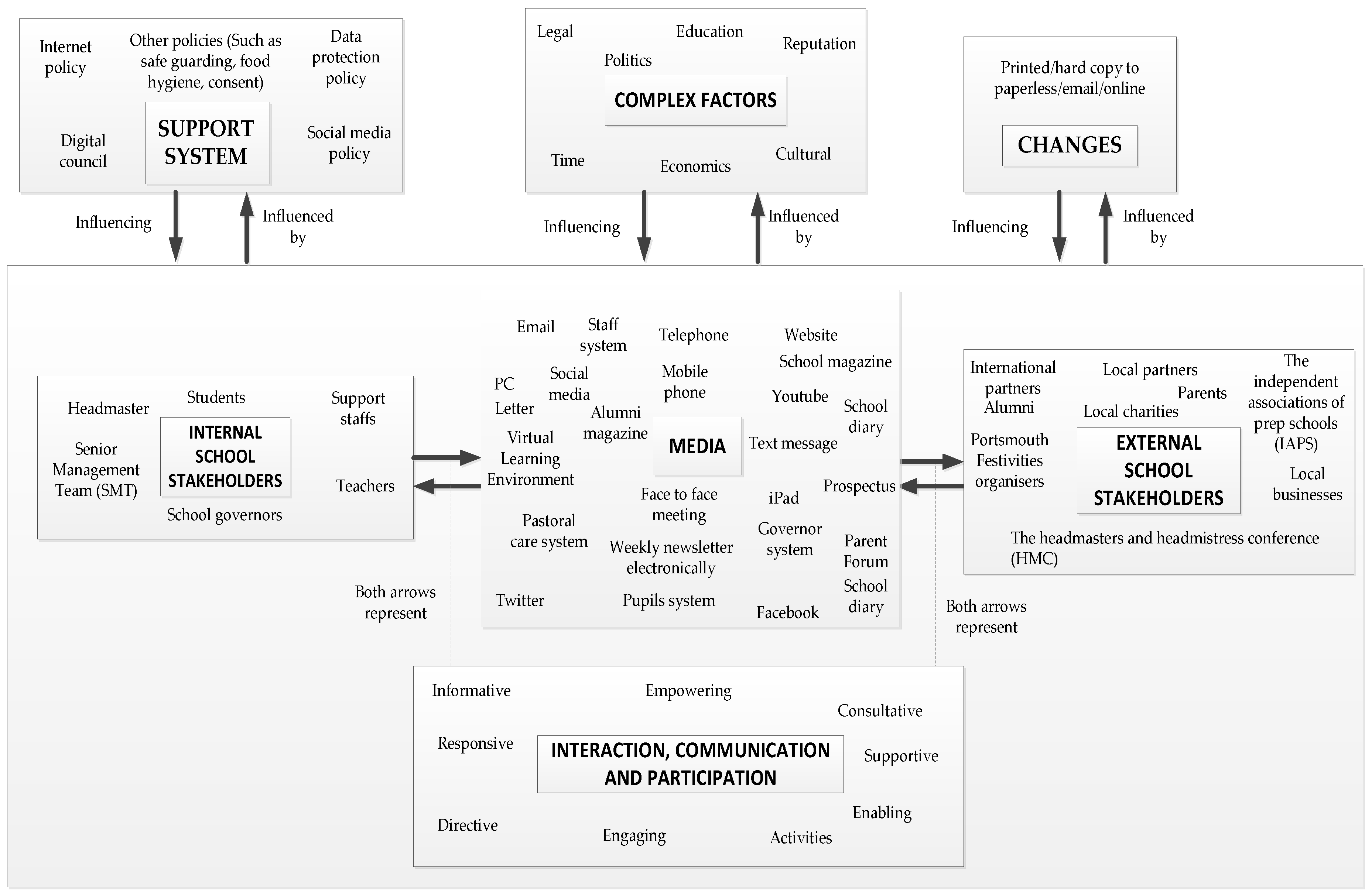



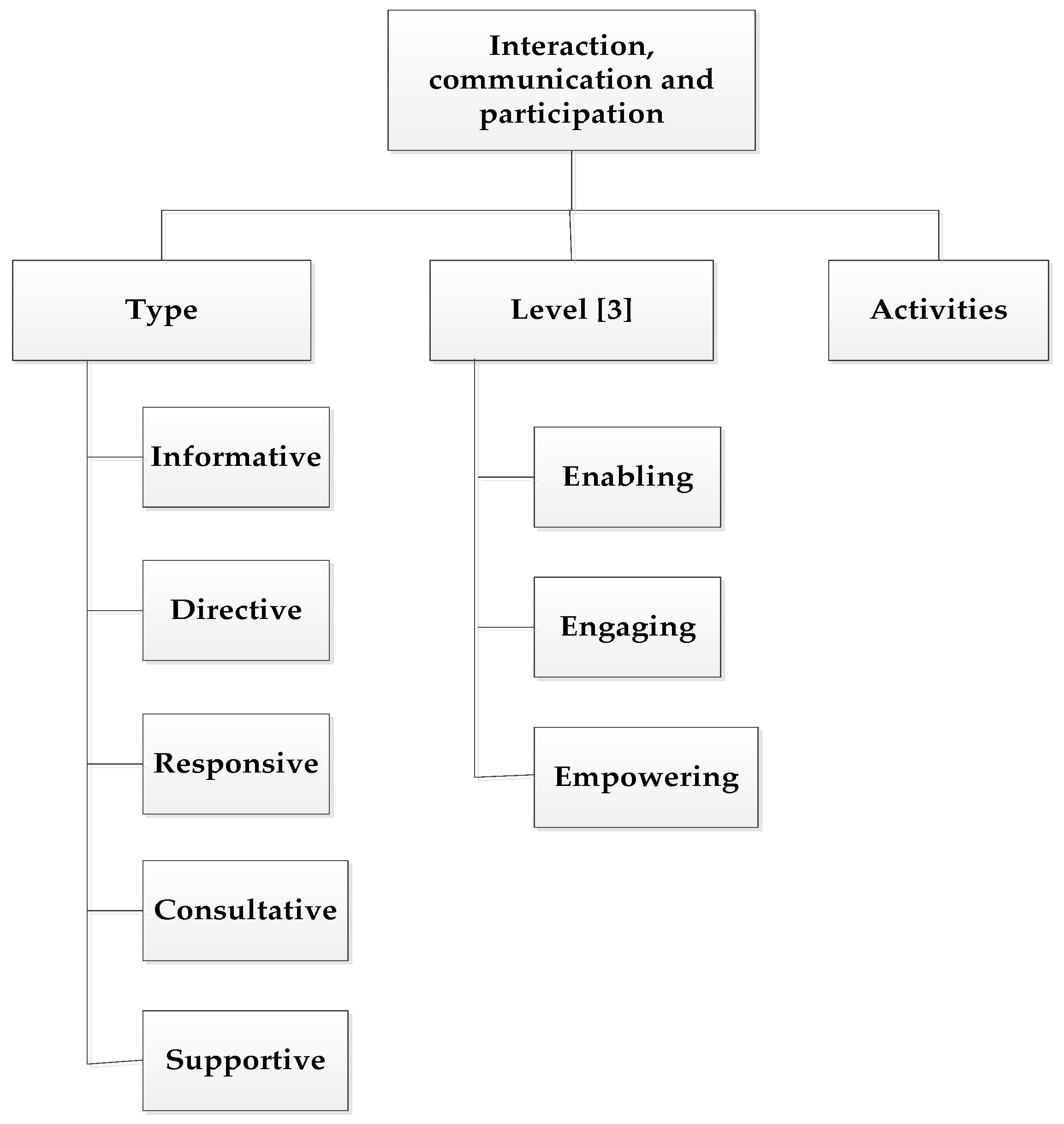

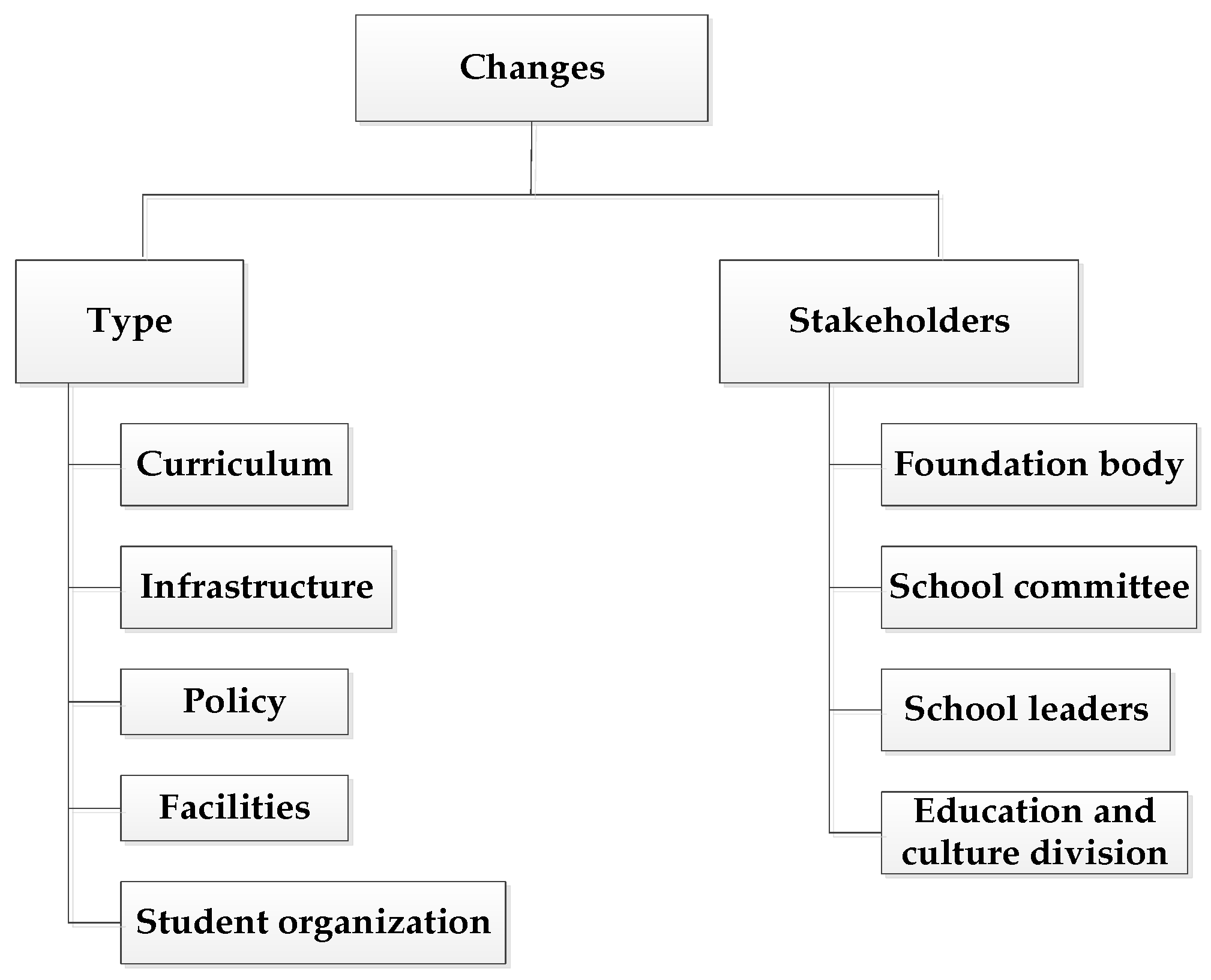
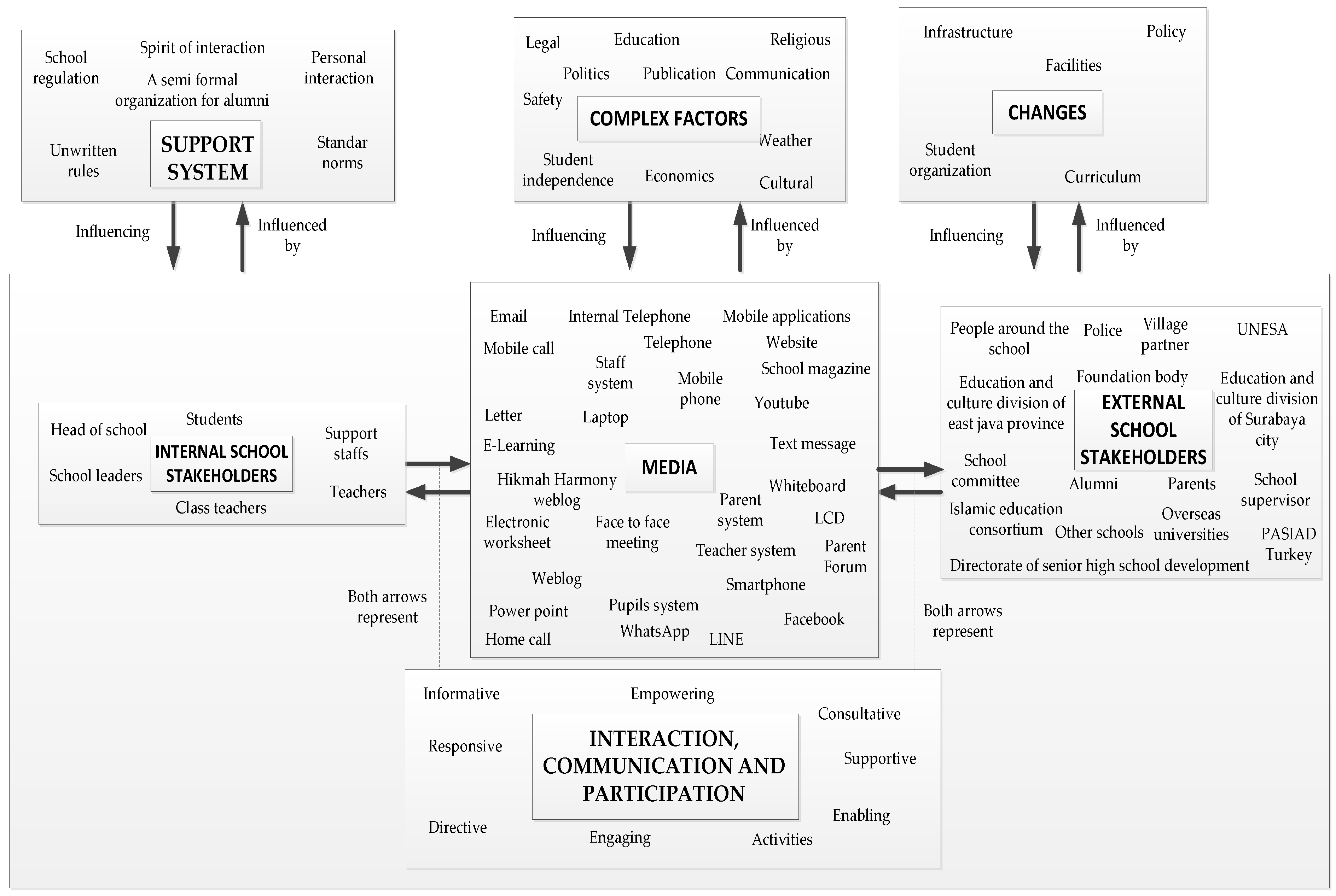
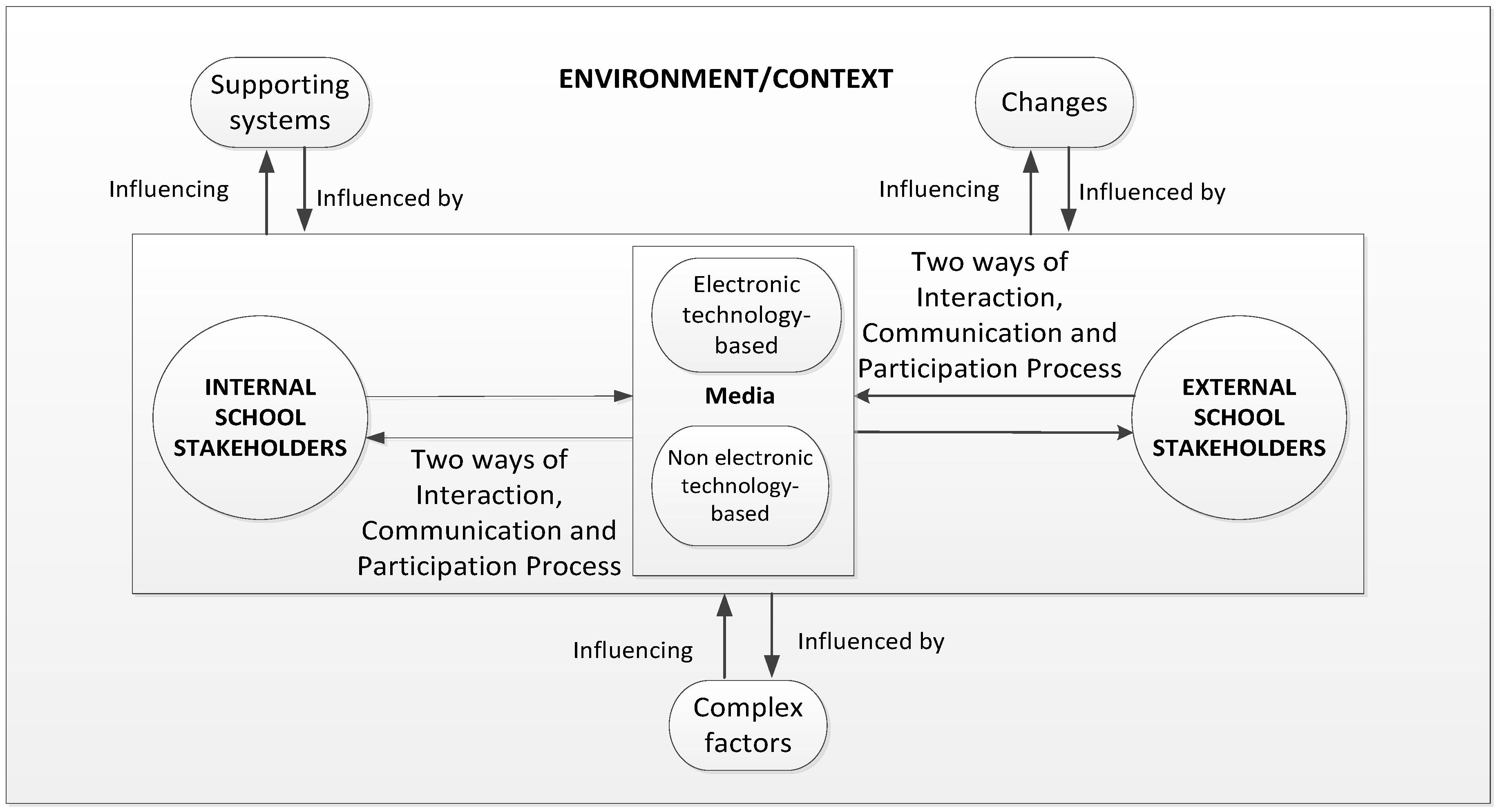
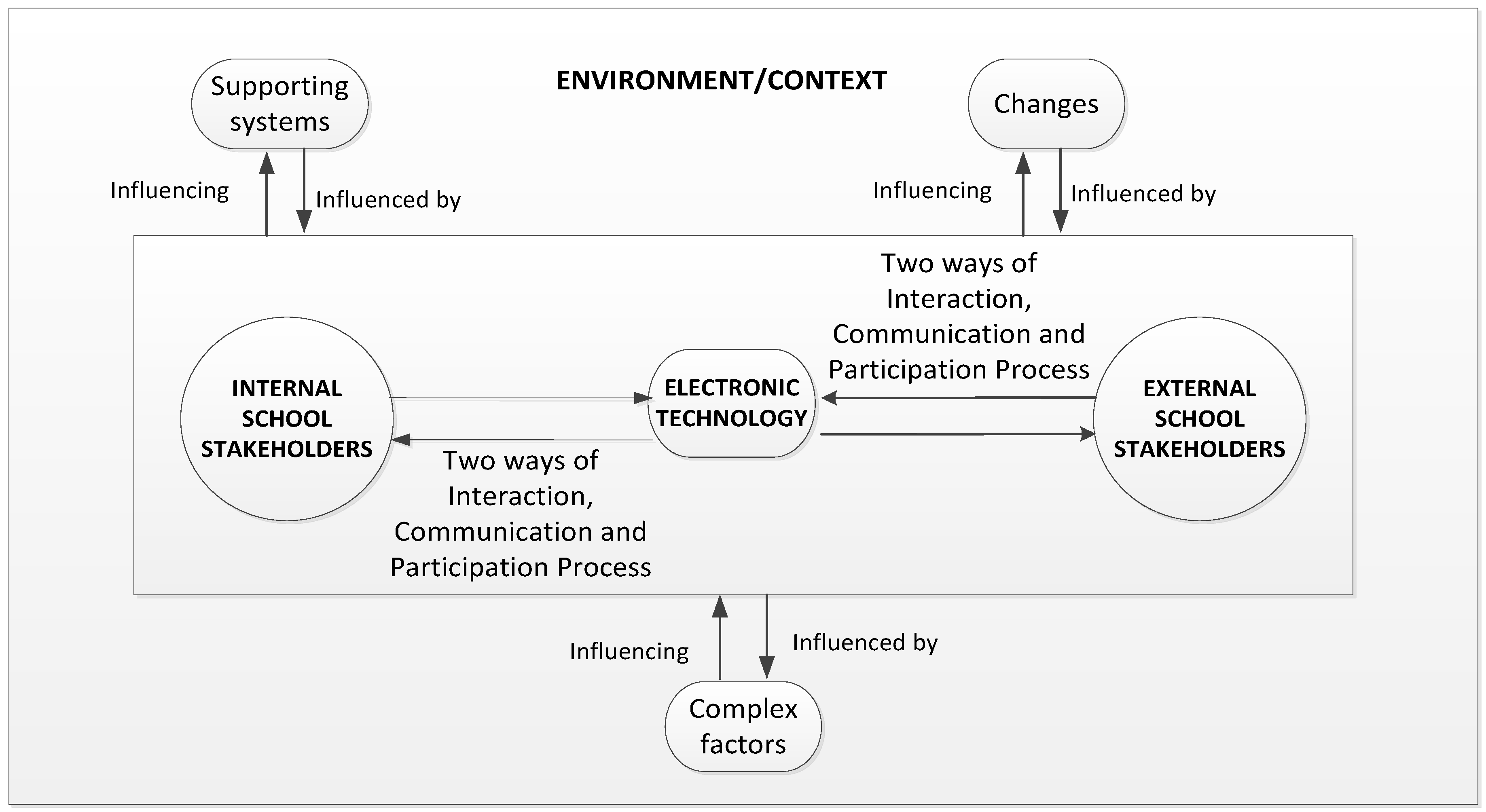
| Framework | Author(s) (Year) | Methodology | Covered | Not Covered |
|---|---|---|---|---|
| Levels of Participation | Macintosh (2004) | Case studies in Europe | Stages of Participation |
|
| Framework for scoping E-Participation | Tambouris et al. (2007) | Desk Research | Process from Democratic Processes, Participation Areas, Participation Techniques, Categories of Tools and Technologies |
|
| The shape of the E-Participation field | Saebo et al. (2007) | Literature reviews |
|
|
| A Domain model of E-Participation | Kalampokis et al. (2008) | Desk Research | E-Participation domain and details of sub-domain |
|
| A Framework of ICT exploitation for E-Participation Initiatives | Phang and Kankanhalli (2008) | Desk Research | E-Participation objectives and ICT exploitations—a three step procedure for E-Participation initiatives implementation |
|
| A Sustainable E-Participation implementation model | Islam (2008) | Desk Research | Stages of E-Participation implementation |
|
| Hands-On Guideline for E-Participation Initiatives | Scherer et al. (2010) | Desk Research, Case studies in Europe, Survey/Questionnaires, Interview | A Six step iterative to develop and implement E-Participation successfully |
|
| Reference Framework for E-Participation | Scherer and Wimmer (2011) | Desk Research, Survey | Requirements of E-Participation project implementation |
|
| Malaysia E-Participation Framework using Actor Network Theory (ANT) Approach | Bin Salamat and bin Hasan (2011) | Case study in Malaysia | E-Participation platform based on Malaysia case study and Actor Network Theory (ANT) |
|
| The shape of the E-Participation field revisited (2006–2011) | Medaglia (2012) | Literature reviews | E-Participation actors, activities, effects, evaluation and contextual factors |
|
| Step | Activity | Output | Validation (Y/N) |
|---|---|---|---|
| 1 | Exploratory study | ||
| a. Gathering information | Exploratory study result | Y | |
| b. Selection of significant issues in Hampshire, UK and Surabaya, Indonesia | Education issue was selected | ||
| c. Selecting schools in both contexts | A grammar school in Hampshire, UK and a private school in Surabaya, Indonesia | ||
| d. Investigation into both schools | Information about both schools | Y | |
| 2 | Updated initial e-participation frameworks | E-participation frameworks for school version 1.0 | Y |
| 3 | Selection of a theoretical tool | Used ANT | |
| 4 | Ethics review | Ethics review certificate | Y |
| 5 | In-depth interview process | ||
| a. Designed interview questions | List of interview questions | Y | |
| b. Pilot interview (mostly UK) | 4 people interviewed | Y | |
| c. Approaching participation candidates, recruitment of participants, and in-depth interview conversation in the schools below: | Most interviews are maximum 60 min; just a few interviews are more than 60 min because there were interesting answers from the interviewees. | Y | |
| A grammar school in Hampshire, UK | 3 people agreed to be interviewed | ||
| A private school in Surabaya, Indonesia | 12 people agreed to be interviewed | ||
| 6 | Coding process | ||
| a. Transcribing process | Interview transcripts | ||
| b. Coding activities through various techniques as following: | Y | ||
| Coding process manually using MS Word and MS Visio based on transcript and audio recording of the interview | List of codes on MS Word | ||
| Coding process using NVIVO 10 based on the transcript and audio recording of the interview | List of codes on NVIVO 10 | ||
| c. Classified into themes groups | 6 themes | ||
| 7 | Describe and classify the results of both case studies | ● Description and classification of both case studies’ results ● Model of participation in both schools | Y |
| 8 | Analysed similarities, differences, and common themes | Similarities, differences, and common themes | Y |
| 9 | Updated again model of participation in both schools | Common ground model of participation in both schools | Y |
| 10 | Develop model of e-participation for schools | Model of e-participation within schools | Y |
| 11 | Verification of the results and frameworks | Interview results and frameworks have been verified | Y |
| 12 | Interpretation, critical analysis, and reflection | ● A model of e-participation within school ● A new definition of e-participation within school | Y |
| Interviewee | Number of Interviewees |
|---|---|
| A former of parent at a grammar school in Hampshire, UK | 1 |
| A former school governance at another grammar school, UK | 1 |
| A former teacher at a private school in Surabaya, Indonesia | 1 |
| A parent of a schoolchild in Hampshire, UK | 1 |
| School | Interviewee | Number of Interviewees |
|---|---|---|
| A grammar school in Hampshire, UK | Deputy head of communication and co-curriculum | 1 |
| Marketing manager | 1 | |
| Parent | 1 | |
| A private school in Surabaya, Indonesia | Head of school (former vice head of school for curriculum) | 1 |
| Former head of school | 1 | |
| Vice head of school of infrastructure (former vice head of school for student affairs) | 1 | |
| Teacher | 2 | |
| Administration staff | 1 | |
| Alumni | 4 | |
| Foundation Staff | 1 | |
| Parent | 1 |
| Concept | Description |
|---|---|
| Actor (or Actant) | Both human beings and non-human actors |
| Actor-network | Heterogeneous network of aligned interests, as follows: people, organizations, and standards |
| Enrollment and translation | Creating a body of allies, human and non-human, through a process of translating their interests to be aligned with the actor-network |
| Delegates and inscription | Delegates are actors who “stand in and speak for” particular viewpoints that have been inscribed in them |
| Irreversibility | The degree to which it is subsequently impossible to go back to a point where alternative possibilities exist |
| Black box | A frozen network element |
| Interresment | a process of convincing the other actors to accept and recognize definition of the focal actor |
| Immutable mobile | Network element with strong properties of irreversibility and effects that transcend time and place |
| Authors (s) | Title | Application Method |
|---|---|---|
| [47] | Machines and manoeuvres: responsibility accounting and the construction of hospital information systems | Identified actors and analysed interpretative approach about resource management and technology implementation |
| [48] | Boundary disputes negotiating the boundary between the technical and the social in the development of IT systems | Identified actors/actants, relationships, and changes |
| [40] | GIS for District-Level Administration in India: Problems and Opportunities | Telling a different story, anti-narrative, key events and phrase in the case. It also examining processes of network building in the case study |
| [49] | Drifting technologies and multipurpose networks: the case of the Swedish cash card | Identified actors, networks, interests and agenda |
| [50] | Implementing property tax reforms in Bangalore: an actor-network perspective | Provide themes related to problematization, interresment , enrolment, and mobilization |
| [44] | Understanding e-Government project trajectories from an actor-network perspective | Discussed local and global networks framework, network and project trajectory, as well as investigated network and power |
| [51] | Contextual dynamics during health information systems implementation: an event-based actor-network approach | (1) Identified significant dynamics related to implementation content (2) Used events to focus, structure, and present the ANT analysis |
| [52] | Constructing participation practice: ANT account | Discussed translation, sociology associations, and network building |
| [10] | An Actor Network Theory (ANT) approach to Malaysian e-participation framework | Identified group of user, the actor, and roles, the causes, building the actor network, obligatory passage point (OPP), obstacles, and enrolment |
| [45] | Modernisation through ICTs: towards a network ontology of technological change | Discussed ontological and methodological principles of ANT |
| [53] | The mobile media actor-network in urban India | Described actors, actor-networks, the four moments of translation: problematization, interresment , enrollment, and mobilization |
| [46] | Actor-Network Theory and methodology: Just what does it mean to say that non-humans have agency? | Understanding nonhumans exercise agency |
| Theories | Brief Descriptions | Advantages | Disadvantages |
|---|---|---|---|
| The Social shaping of technology (SST) | This theory was developed by [54]. It explains that the design and implementation of technology are patterned by a range of factors, such as organizational, political, economic and cultural factors as well as technical considerations [55] |
|
|
| Institutional Theory | According to [56], the concepts of institution and institutionalization have been defined in various ways, with substantial diversity among approaches, such as by Selznick, Berger and Luckman, Zucker, Meyer and Rowan, Hughes, Hertzler, Friedland and Alford |
|
|
| Structuration Theory | This theory was developed by sociologist Anthony Giddens. It proposes that agents and structures are not two independently and conflicting elements, but act as a mutually interacting duality |
| |
| Stakeholder Theory | It was originally developed by R. Edward Freeman in the book Strategic Management. This is a view of capitalism that stresses the interconnected relationships between a business, its customers, suppliers, employees, investors, communities, and others who have a stake in the organization [61] |
|
|
| Grounded Theory | Grounded theory was developed by sociologists Glaser and Strauss. It is a general inductive methodology involving the systematic generation of a theory from systematic research, and a set of rigorous research procedures leading to the emergence of conceptual categories |
|
|
| Actor-Network Theory (ANT) | It is a concept developed by Callon, Latour, and Law in the 1980s ([ 24,25,36]). It explains networks, which consist of heterogeneous or socio-technical elements called Actants, such as human or technological artefacts, organizations, institutions, and others |
|
|
| Themes | Similarities |
|---|---|
| Stakeholders |
|
| Media |
|
| Supporting Systems |
|
| Interaction, Communication, and Participation |
|
| Changes |
|
| Complex Factors |
|
| Themes | A Grammar School in Hampshire, UK | A Private School in Surabaya, Indonesia |
|---|---|---|
| Stakeholders |
|
|
| Media |
|
|
| Supporting systems |
|
|
| Interaction, Communication, and Participation | Activities:
| Activities:
|
| Changes |
|
|
| Complex factors |
|
|
| Defined by | Definitions of e-Participation |
|---|---|
| Saebo, Rose, and Flak (2008) | “The ‘e (lectronic)’ in eParticipation has a clear association with earlier ‘e’ disciplines (eBusiness, eGovernment) and refers to the use of new information and communication technologies (particularly the Internet), with the implication that the technology has the ability to change or transform citizen involvement in deliberation or decision-making processes” |
| Wikipedia (2016) | “ICT-supported participation in processes involved in government and governance” |
| United Nations (UN) (2016) | “Fostering civic engagement and open, participatory governance through Information and Communications Technologies (ICTs). Growing evidence points to the rapid expansion of e-Participation as a tool for engagement and strengthened collaboration between governments and citizens. Its objective is to improve access to information and public services as well as to promote participation in policy-making, both for the empowerment of individual citizens and the benefit of society as a whole” |
| Yusuf, Adams, and Dingley | The various activities of interaction, communication and participation between numerous internal and external school stakeholders through several electronic technologies which are influencing and influenced by many complex factors, support systems and change factors |
© 2016 by the authors; licensee MDPI, Basel, Switzerland. This article is an open access article distributed under the terms and conditions of the Creative Commons Attribution (CC-BY) license (http://creativecommons.org/licenses/by/4.0/).
Share and Cite
Yusuf, M.; Adams, C.; Dingley, K. Digital Citizen Participation within Schools in the United Kingdom and Indonesia: An Actor–Network Theory (ANT) Perspective. Information 2016, 7, 69. https://doi.org/10.3390/info7040069
Yusuf M, Adams C, Dingley K. Digital Citizen Participation within Schools in the United Kingdom and Indonesia: An Actor–Network Theory (ANT) Perspective. Information. 2016; 7(4):69. https://doi.org/10.3390/info7040069
Chicago/Turabian StyleYusuf, Muhammad, Carl Adams, and Kate Dingley. 2016. "Digital Citizen Participation within Schools in the United Kingdom and Indonesia: An Actor–Network Theory (ANT) Perspective" Information 7, no. 4: 69. https://doi.org/10.3390/info7040069
APA StyleYusuf, M., Adams, C., & Dingley, K. (2016). Digital Citizen Participation within Schools in the United Kingdom and Indonesia: An Actor–Network Theory (ANT) Perspective. Information, 7(4), 69. https://doi.org/10.3390/info7040069





